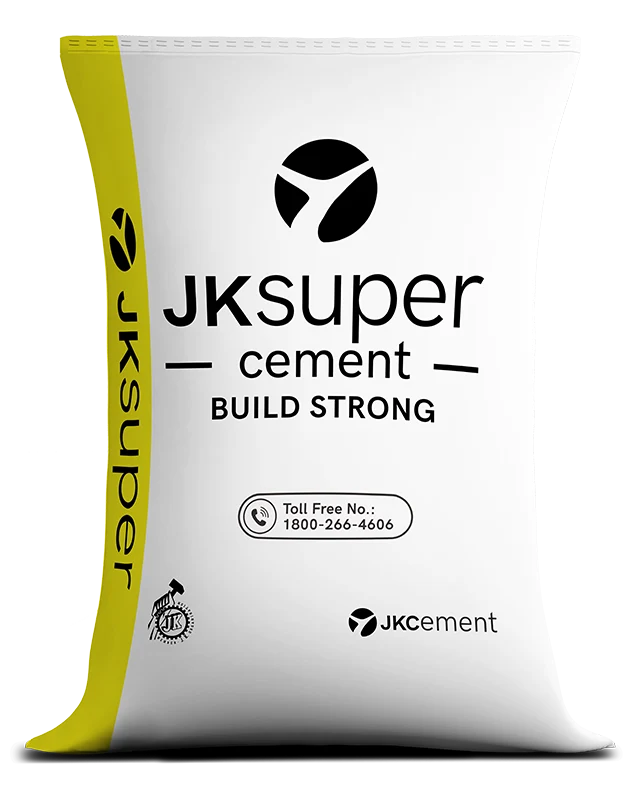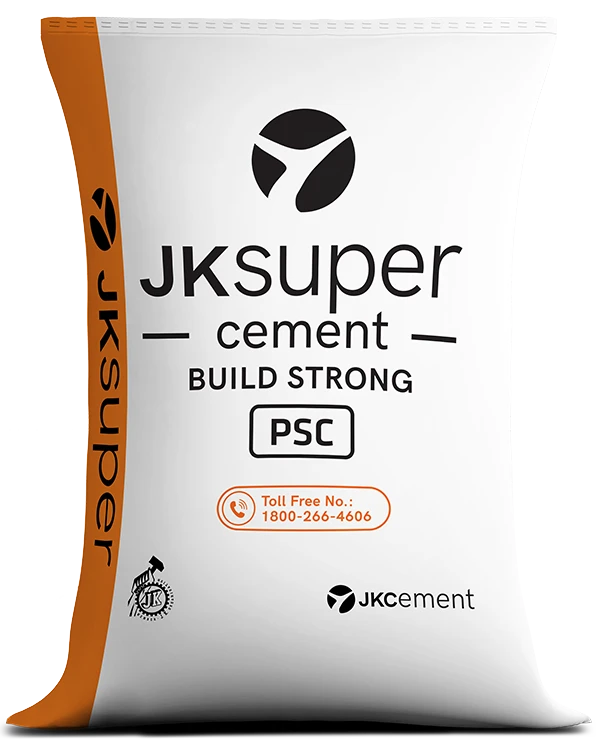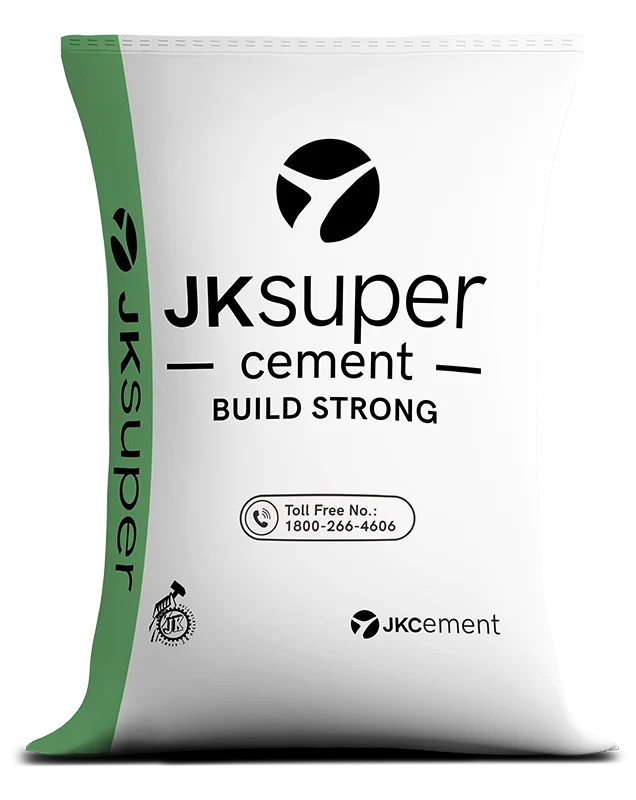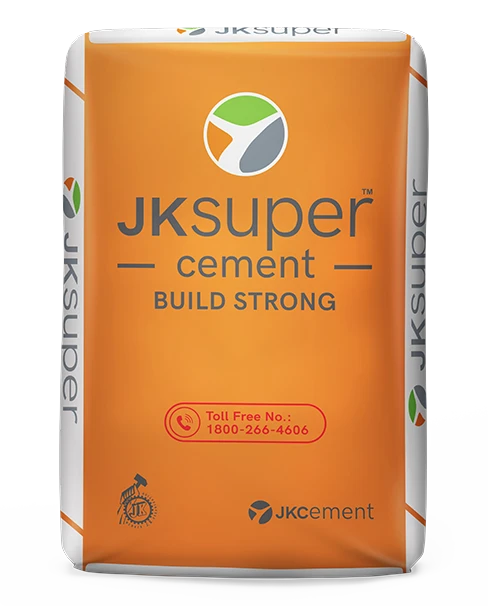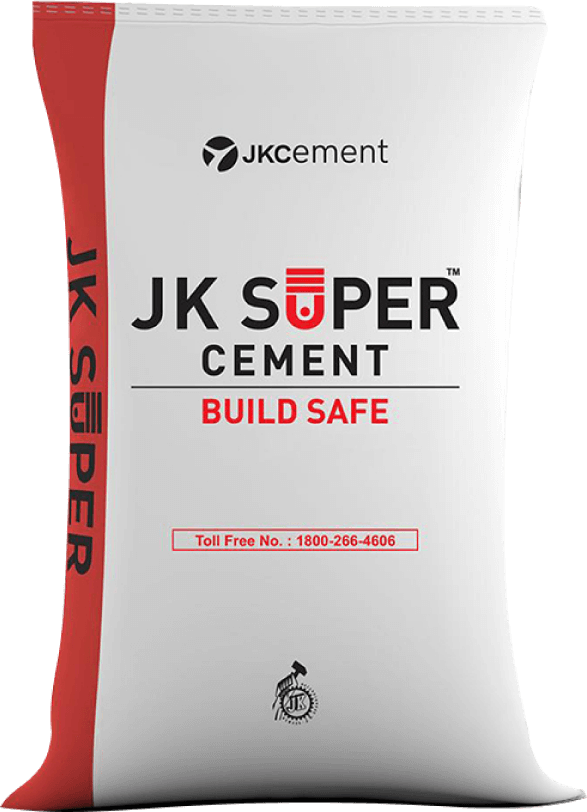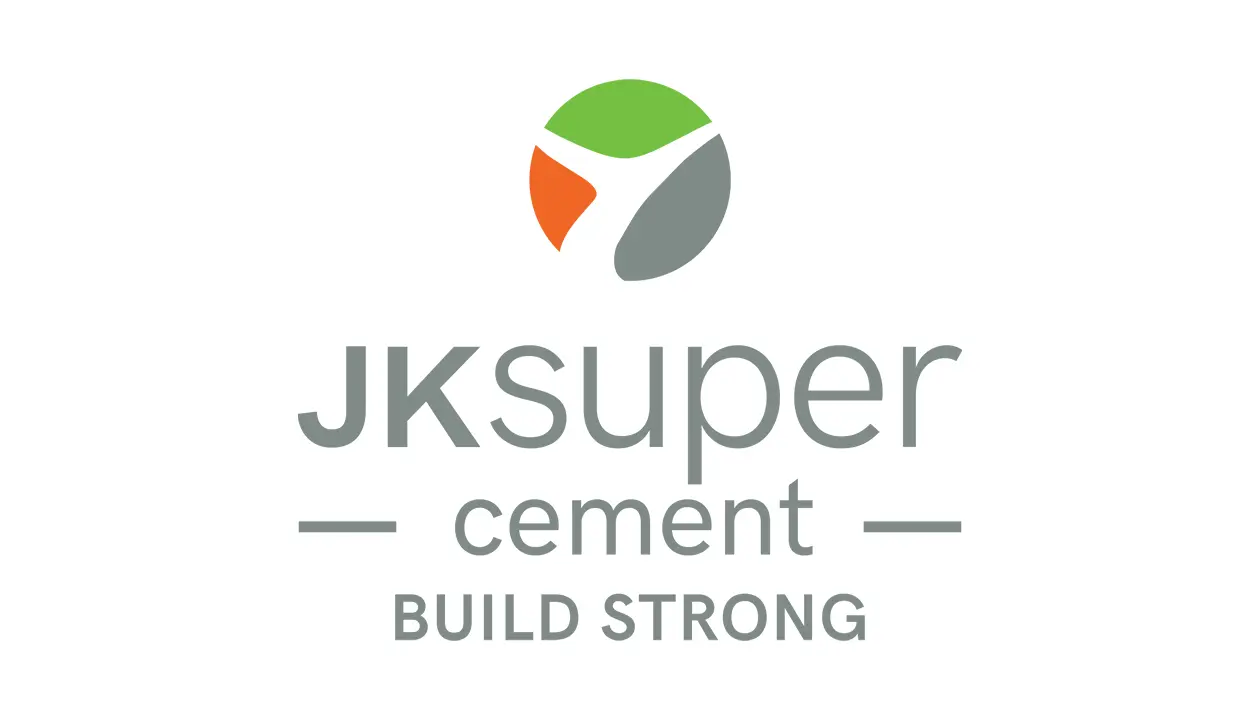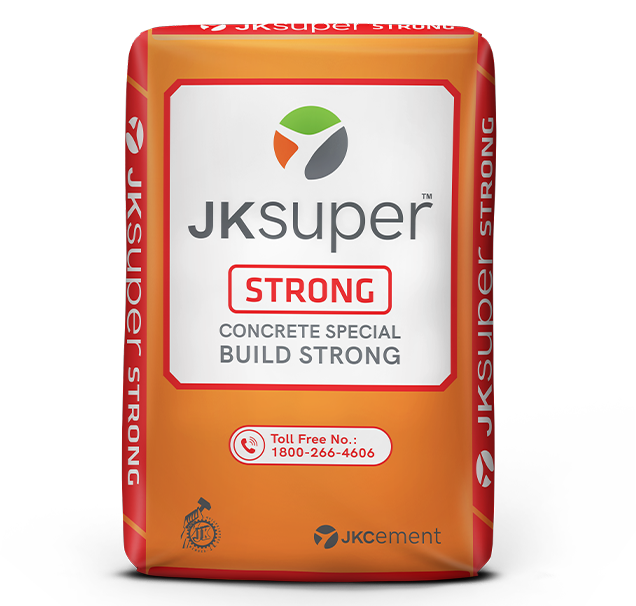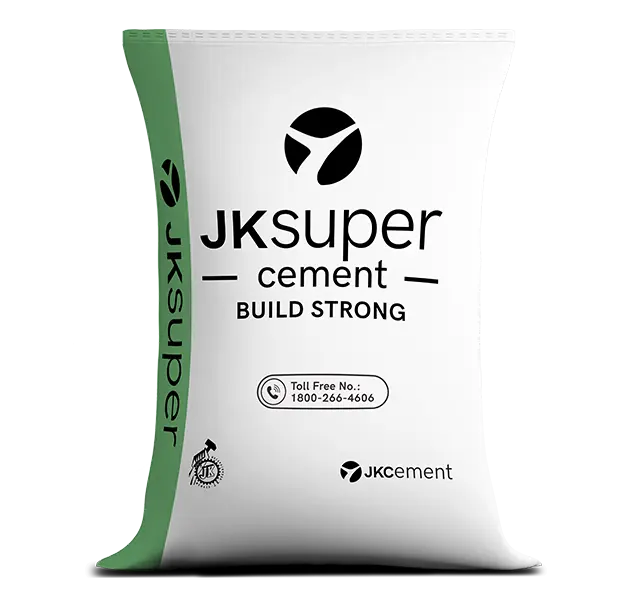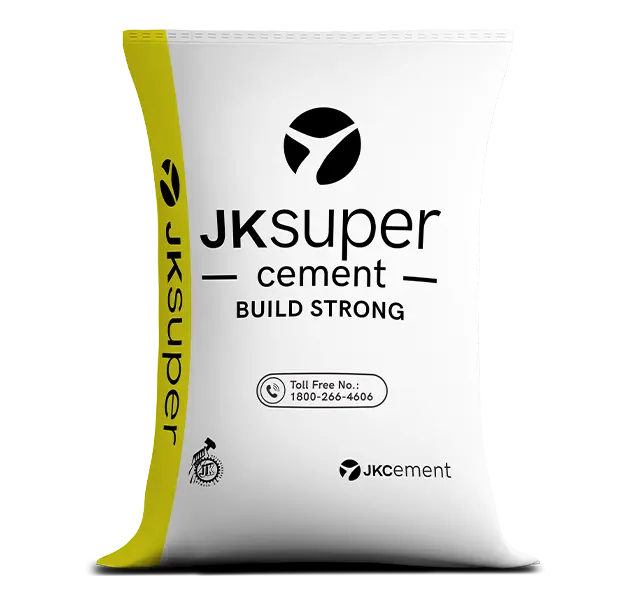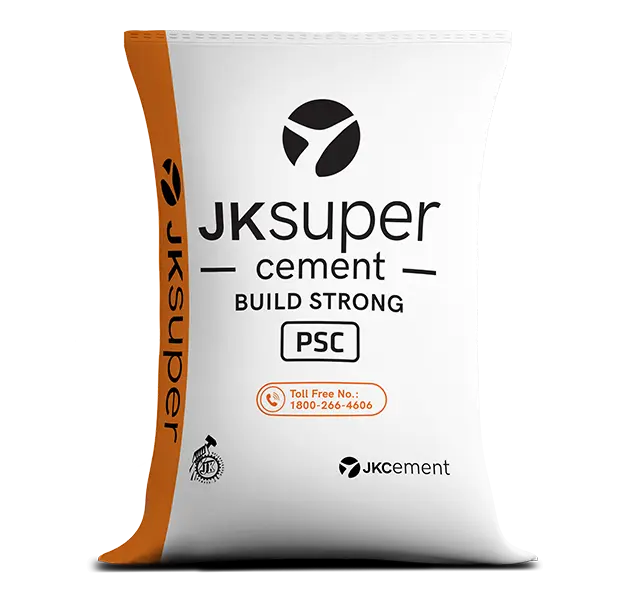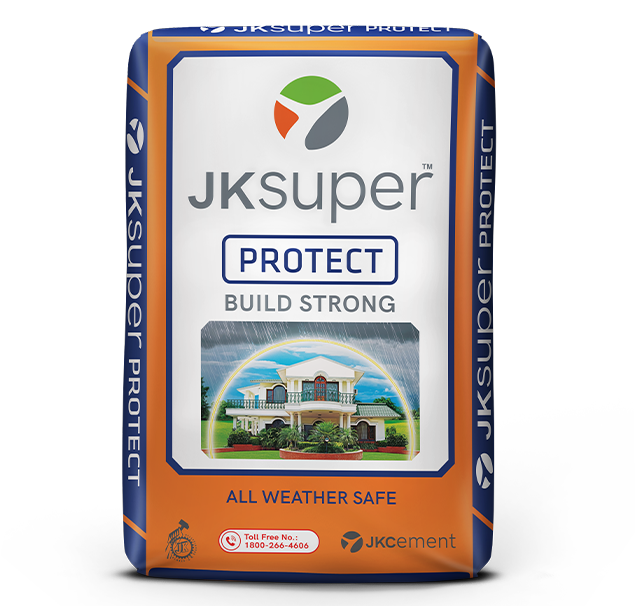JK Super Cement - PPC
A premium Portland Pozzolana Cement (PPC), suitable for all construction applications
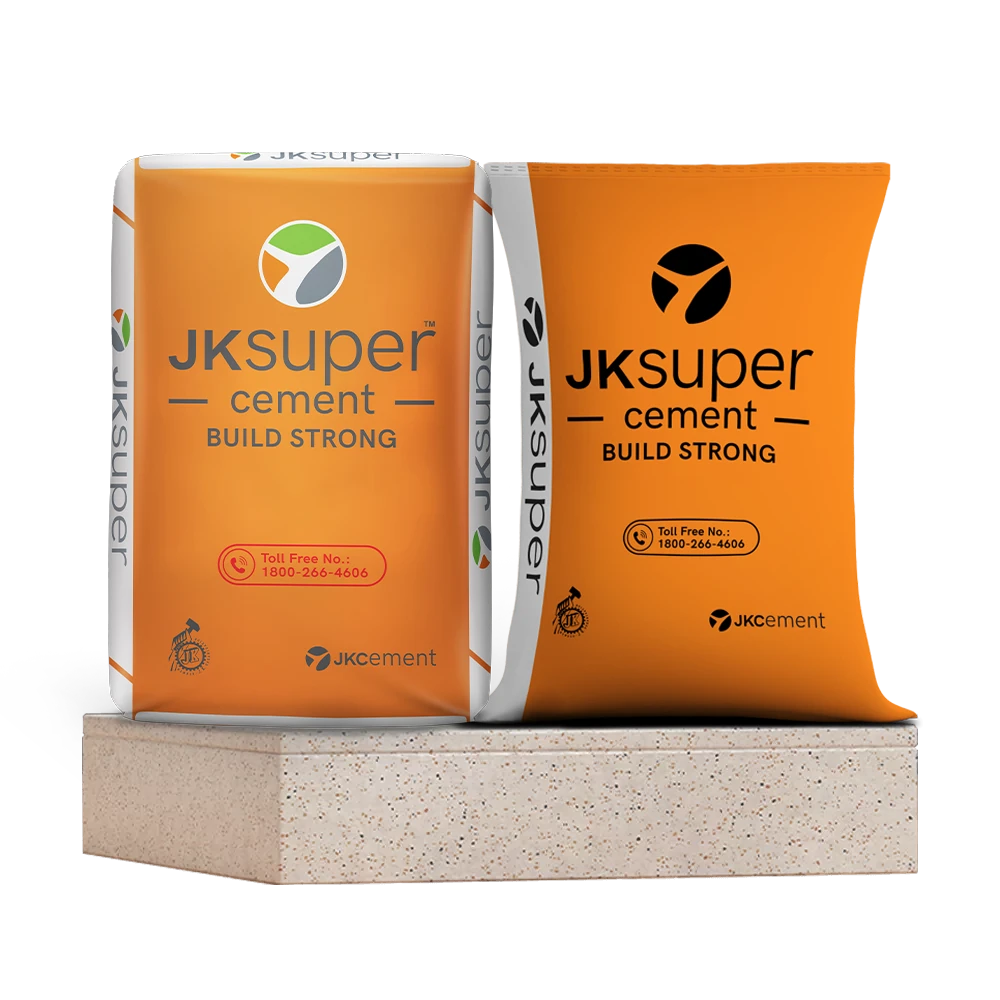
Our Super Range
About JK Super Cement - PPC
JK Super Cement - PPC is produced with the highest quality of limestone and clinker that are ground finely for enhanced cohesiveness when mixing concrete. Our cement is suitable for all types of geographies. With its low heat of hydration, the cement absorbs water faster. Protect your building’s reinforcement and overall life with our range of JK Super Cement - PPC
Stressed with your construction planning? Get your personal expert construction advisor – Mr. Build Xpert.
Benefits of JK Super Cement - PPC
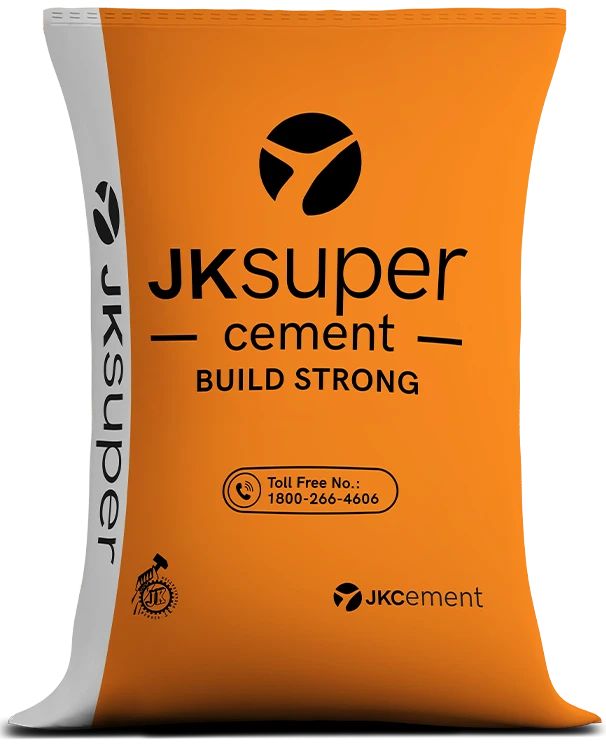
Higher fineness and better workability
Low heat of hydration
Prevents lime leaching
Increased strength and corrosion resistance
GET EXPERT GUIDANCE FROM FOUNDATION TO FINISH
FILL THE FORM FOR A FREE CONSULTATION
Unlock Build Xpert’s
Onsite Assistance
Applications Of JK Super Cement - PPC
JK Super Cement - PPC can be used in the following structures:
-
Slabs
Build cement slabs of varying thicknesses that can be used to form floors or roofs.
-
Beams
Create a safe load path with horizontal structures made from durable JK Super Cement - PPC.
-
Foundation
Build a strong foundation for supporting buildings and efficiently transmitting the load to the earth.
A Bold Step Towards a Stronger Future

What our customers have to say
Explore Other Range Of Cements
Besides our range of JK Super Cement - PPC, we also offer JK Super Strong Concrete Special and JK Super Protect.
FAQs
To ensure there are no cracks in the concrete once it has hardened, you can do the following:
Add the right amount of water while mixing concrete. While adding excess water can make the concrete application easy, the excess water can cause shrinkage of the concrete, which causes it to crack. Also, allow the concrete to cure naturally. The chemical reaction that causes the concrete to go from wet to dry occurs over several weeks.

